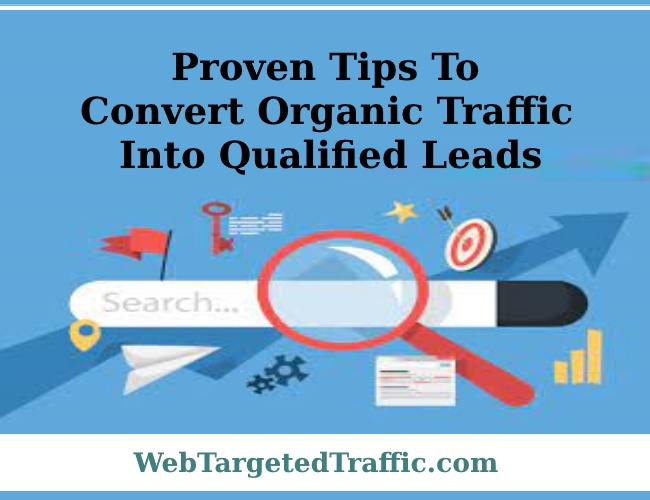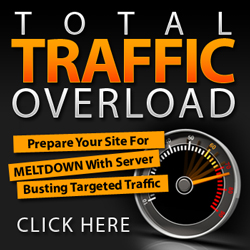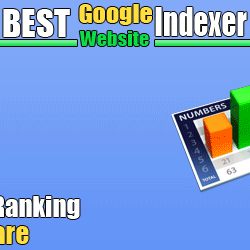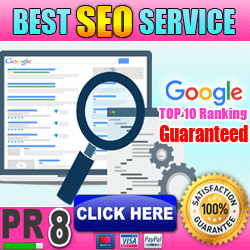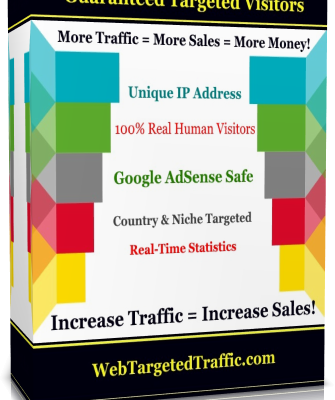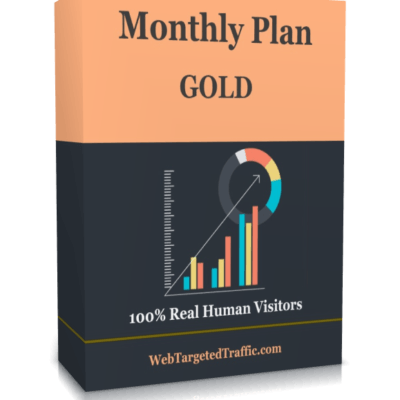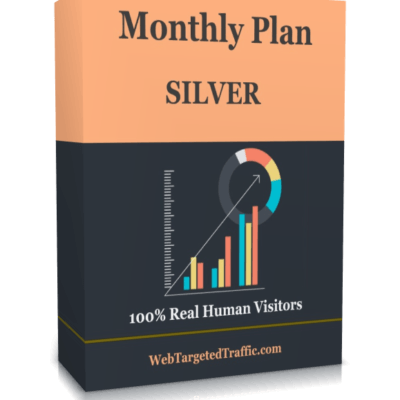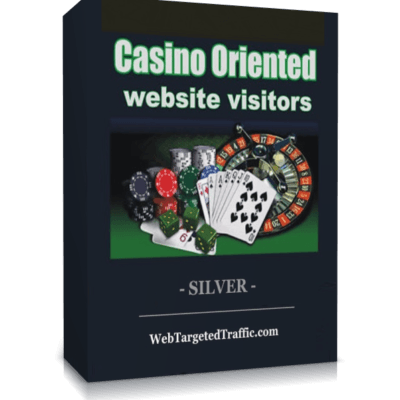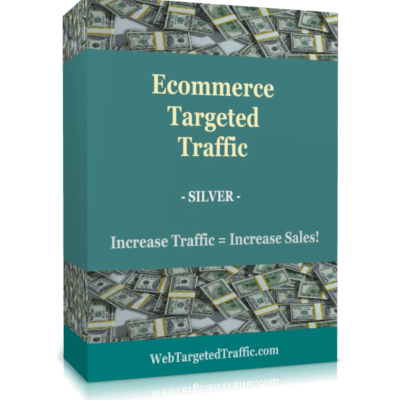Marketers bring in relevant visitors to the website through various marketing channels like social media, paid ads, and organic channels.
All these efforts go in vain when you under-utilize the incoming visitors to the website.
Yes!! 97-98% of website traffic comprises anonymous visitors and you just interact with the remaining 2-3% of them who have either subscribed or made a purchase.
There are no one-size-fits-all criteria to qualify leads — it’s unique to every business. But once you have a clear idea about your criteria, get started with these tips to take full advantage of your organic traffic and generate qualified leads.
Since you’re getting considerable traffic to your website and probably have decent domain authority, it’s time to not only focus on keyword optimization but also on intent optimization.
That is, instead of creating content around keywords, think about why your visitors search for particular terms — what they want when they type in that term, their intent behind it.
While meeting user intent is an integral part of SEO, it often gets lost in the quest to rank for high-volume keywords.
However, intent optimization can help you attract more prospects, and the value your content offers can help convert them into leads and customers.
Now, the first thing you can do to match your content with user intent is to run a content audit on your website. Look at your existing pages and whether they’re solving queries and ranking for trustworthy answers. Also, add relevant calls-to-action (CTA) to them to increase the chances of conversion.
Table of Contents
How to Audit Your Content Production: a Step-By-Step Guide
Optimizing future posts for intent
Going forward, you can look after intent in your strategy by creating content for users across different stages of the funnel.
Identify and understand the pain points consumers face at different phases of their buying journey and cover content that addresses that problem and solves their search query.
For example, instead of going for a sale, create informative “How To” articles to attract top-of-the-funnel leads — they’ll help you educate them, establish your expertise, and build a relationship. You can even add CTAs prompting users to join your email list so you can continue nurturing them with valuable information.
Meanwhile, comparison posts or case studies can be beneficial to converting your middle or bottom-funnel leads.
For instance, a page like this is not only likely to get high traffic but also high leads and signups.
Besides market research, the best way to create intent-oriented content is to interact with your past and current customers and take cues from your conversations with your prospects, and the questions or objections they raise.
This will give you a good sense of what content people at different stages of the funnel are interested in, the problems they face and are looking to solve.
You can get the best insights about what your audience finds useful and what gets them to convert from your own posts and pages — make use of them.
The first step here is to set up your conversion goals on Google Analytics. You can set them based on the time a user spends on a page, the number of pages they view or based on an event — like whether they submit a form or download a PDF.
Once you’ve configured your goals, track which pages get you the most clicks (or your “entry” pages) and which ones generate the most leads for you.
This will be a gold mine of information — it’ll tell you the content (information and type) your audience is looking for, what meets their interests, and can address their problems.
Link your blogs to relevant product/service pages
If your website has a blog that generates high traffic, not linking your product/service pages to relevant posts could be costing you leads and revenue.
So, suppose a specific blog post gets traffic from a particular search query. In that case, it’ll help users understand how they can solve that problem while directing them to your product/service as a potential solution.
For example, notice how smartly Hubspot promotes its lead nurturing course within a blog on a similar topic.
Not all your visitors will buy your product or service right away — research says 98% of visitors leave a website without converting.
But this is where building an email list comes into play—it helps you engage and nurture subscribers, provide them value over time, and eventually convert some of your leads into paying customers.
But how can you get your visitors’ email ids to send them useful information? Through lead magnets and opt-in email marketing!
Offering lead magnets in exchange for email addresses is a great strategy to convert your website traffic. Moreover, if someone divulges their website/email id to grab your content, it’s a sign they’re interested in what you have to offer and are thus a qualified lead.
Your lead magnet can be an eBook, whitepaper, checklist, cheat sheet—anything that will be beneficial to your audience and tempt them to give you their contact information.
Another excellent way to grow your email list with qualified leads is to create content upgrades.
Content upgrades are also bonuses you give to your visitors for free in exchange for their email addresses. However, what makes them different from lead magnets is that they are specific and tailored to a particular post on your blog.
So, while you can promote your lead magnets site-wide, a content upgrade is positioned within a specific article and is meant to provide more value on the same topic.
Content upgrades are a great way to measure qualified leads—because those who are interested in your content and read it in its entirety are more likely to sign up for bonus resources.
The success stories of these resources are also many. Wishpond, for instance, increased their email opt-ins by 1,650% when they started offering contextual and relevant content upgrades within their posts instead of generic eBooks.
Creating a content upgrade also helped Backlinko’s Brian Dean increase their conversions by 785% in a single day. Here’s a breakdown of the process he followed that you can, too:
- Identify and create a supporting resource that can up the value of the post.
- Add an opt-in form within the post to promote this resource (You can embed it at the end or repeatedly within your post.)
And, you can offer any digital product like templates, case studies, checklists, printables, or just extended blog content as an upgrade.
CoSchedule does a great job at this — they’ve created various template bundles and promote them within related blogs. The thought of getting more value and further simplifying the task at hand can convince visitors to sign up and give their email ids.
Optimize your landing pages for conversions
You know what they say — creating a landing page isn’t hard, but creating a high-converting one is.
A poor landing page, whether it’s for your lead magnet or core product/service, could be a reason why your website traffic isn’t converting.
Use Analytics and tools like heatmaps and scroll maps to check your landing page performance, where users click and stop, and where they bounce off.
You can tweak elements based on the data you gather, but some landing page best practices are:
However, a longer form asking for more details can be useful if you want to qualify leads for your product/service.
Most importantly, keep A/B testing your landing page to see which change brings the best results.
Add live chat to your website
Installing a live chat is an effective but underutilized strategy to turn website visitors into leads.
Offering real-time support, live chat helps engage visitors, resolve any query they may have about your product/service, and thus, guide them down the funnel. Besides, research suggests that a live chat feature can increase website conversions by 20%.
Now, whether you use a chatbot or get your sales team or a live chat agent to reply, the key is to tailor responses based on each user’s context and the stage they’re at.
For instance, the greetings or questions displayed to users reading an informational blog (awareness stage) should ideally be different from those shown to someone on your pricing page (consideration stage).
You can understand a user’s context through their on-site behavior—the pages they’re visiting, their session duration, the content they’re reading, and whether they’re a returning visitor.
Then, personalize your messages to incite a response from them and improve their experience at your website.
Sprinkle social proof throughout your website
Even if you create quality content and have a unique value proposition, the lack of social proof can make you lose out on precious leads and customers.
91% of shoppers check out reviews before buying from a business — that is a massive number and exemplifies that social proof helps build trust and credibility and convey the value of your product/service.
Doing so helps prospects take the desired action and convert into leads or customers.
Some types of social proof you can add and leverage on your website are:
Customer testimonials or logos.
Displaying your social media following.
Improve your website’s user experience
Would you give your contact details to a company whose website was difficult to navigate and seemed shady? Highly unlikely.
Improving your website’s user experience is important for boosting traffic conversions.
A smooth and easy-to-follow website allows you to guide users to the action you want them to take while creating a positive impression of your brand and enhancing credibility. This can ultimately help you turn more visitors into leads.
Now, you can use tools like scroll maps and session recordings to understand how users interact with your website, whether and where they face obstacles, and make changes accordingly.
Some pro tips to improve your website’s user experience are:
Optimize your website for mobile devices and speed
Nearly half the website traffic comes from mobile devices now, and you can lose significant leads due to factors like unsuitable font size, difficulty in touching links, or slow page load speed.
Identify B2B anonymous website visitors and convert them into sales leads
As we saw before, most visitors leave your website without taking any action —they don’t submit forms or give their information.
But what if you could track these anonymous visitors, see if they fit your ideal customer persona, and proactively contact them?
That’s what website visitor tracking software like Leadfeeder allows you to do.
Using these tools, you can see which businesses are visiting your site — and even granular details like which pages they checked, whether they’re a returning visitor, or what content they read.
This information can help you qualify leads and understand which companies you should focus on reaching out to.
That’s not it. These tools also pull up the contact information of key people within these companies. You can then look these contacts up on LinkedIn Sales Navigator, see if the company size or employee count meets your criteria, and you’ll have a list of warm leads ready.
You can also export this list into an Excel sheet or your Customer Relationship Management (CRM) software. Then, you can reach out to these contacts through LinkedIn messages or cold emails, give them a personal introduction of your business and product/service, or even send them your lead magnets to build trust.
This entire process helps you identify leads you would’ve otherwise missed, fine-tune your outreach efforts, automate your sales process and close more sales.
People who land on your website might not be willing or ready to sign up to your email list or buy from you immediately.
This is where retargeting campaigns come into the picture—they help you build recognition and familiarity, stay top-of-mind of prospects, and increase their chances of buying from you when they’re ready.
Retargeting your organic traffic with Google or social media ads is also an intelligent and effective strategy—because you’re essentially targeting people who’ve visited your website and shown interest in your business.
Now, the simplest way to get started with this is to place a pixel on your website, track visitor behavior, and then retarget them with specific ads when they’re surfing elsewhere.
To take your campaign to the next level and get more efficient results, you can retarget visitors based on their actions on your website, like visiting a particular product or landing page. You can do this by adding a specific page’s URL when setting up your retargeting audience.
The whole idea of retargeting on social media is to bring valuable users back to you when they’re closer to converting.
Nurture captured leads with email marketing
All the efforts you made so far — creating quality content, offering lead magnets, identifying potential customers — boil down to one point, and that’s nurturing.
You can convert leads into customers and help your business’s bottom line by nurturing them and regularly reminding them of your product or service’s value. And email marketing can play a significant role here.
Once users give you their contact information willingly, you can keep them engaged with valuable and useful content shared through an email sequence.
Ideally, you should kickstart your email series with a welcome/delivery email, delivering the lead magnet the user signed up for, thanking them for subscribing, and introducing your business.
You can follow this up with informative emails based on where the user is in their buying journey — identify and understand the problems they’re facing and offer solutions.
Email list segmentation is the process of breaking down your subscribers into smaller groups based on criteria like demography, location, actions (like pages visited), or your form capture data.
For example, notice how Search Engine Journal asks for their visitor’s interest in their opt-in form to send targeted email content.
The good thing is most email tools offer segmentation, so you can easily split your subscribers and send different messages to different segments.
The whole idea is to send persona-specific content to your leads to drive better results and faster conversions. For instance, you can send your top-of-the-funnel leads (like someone who signed up from a purely educational article) your new blog posts or short guides or eBooks on the subject they’re interested in.
On the other hand, sending content like case studies and testimonials to your bottom of the funnel leads will be more beneficial to drive them towards purchase.
Getting traffic to your website organically requires time and effort and is an excellent feat, but it’s not the end-all. It’s only when you can convert that traffic into leads and customers that you benefit your business’s bottom line.
That’s exactly where this article can help—implement a few, if not all, these tips, and you’ll be in a better position in terms of understanding your audience, what they want, and how to deliver to their expectations.
 LEVERAGE TARGETED AFFILIATE TRAFFIC TO INCREASE YOUR WEBSITE AND BLOG TRAFFIC!
LEVERAGE TARGETED AFFILIATE TRAFFIC TO INCREASE YOUR WEBSITE AND BLOG TRAFFIC!
Buying website traffic has never been easier, get started today!

